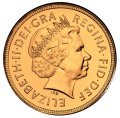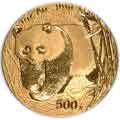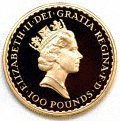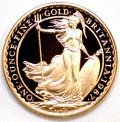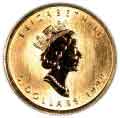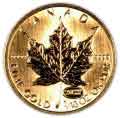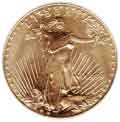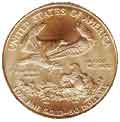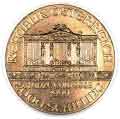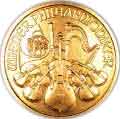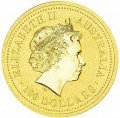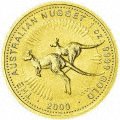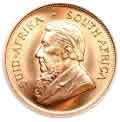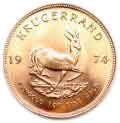
Our thoughts about a considerable number of low carat, low purity, gold coins issued in the past few decades.
Tradition
Traditionally, most gold coins were produced in high purity alloys, often around 96%.
With the exception of electrum (a naturally occurring gold / silver alloy) coins, most gold coins, from the earliest gold coins produced, right up to modern times, have been made using a high proportion of gold in their alloys. For about two thousand years this had been the case, with a few exceptions, usually where governments debased their coinage, often in the hope that it would not be noticed. In almost all case, it was noticed, and the standards eventually got restored.
Durability in Circulation
Very high carat gold alloys are generally too soft to resist wear, and can also be bent easily.
In earlier times, gold coins were more often used as a 'unit of account' or a 'store of value', than a commonly circulating form of money. Coins in common circulation were often made of silver, or base metals such as copper. Probably due to increasingly wealthy economies, gold coins started to be used more frequently in day to day transactions.
Over a long period of time, sometime in the last 500 years, give or take a few centuries, a number of countries reduced the fineness (purity) of the gold alloys in their coinage, probably to increase their durability in circulation.
Certainly, by the period between the First and Second World Wars, when gold ceased to be commonly used in everyday change, most countries had adopted gold coinage alloys of around 90%.
It is worth noting that it does not follow that because pure gold is soft, then the lower the gold content of the alloy, the softer. Metallurgy is not quite so simple. There are some proportions which produce more durable results than others, In addition, low carat alloys, certainly below about 18 carat (75%), are prone to tarnishing, and chemical attack.
Circulation Coinage Alloys Over the past half millennium, two main standards have emerged for circulation coins, 90% fine (21.60 carats), and 91.66% fine (22 carat), these standards combined durability with resistance to tarnishing. Most countries have used one or other of these two standards, although there have been a few exceptions.
Investment Gold = Minimum 90% The minimum accepted purity standard for gold coins to be treated as VAT free investment gold in the EU is 900 parts per thousand (90%), equivalent to 21.60 carats.
Fine Gold Coins
In very recent years, a number of "fine" gold bullion and collectors coins have been issued, ranging from 99.9% to 99.999% fine, although these highly pure gold coins would be too soft for durability in circulation, they are acceptable for non-circulation uses.
In our opinion, there is no real benefit to be gained from using high carat gold alloys for coins. The main reason for the increase is their production is almost certainly marketing. The Royal Canadian Mint seems to have found that, by producing a "pure" or "fine" gold bullion coin (the gold maple leaf), it could attract extra sales, particularly in some markets. Many Asian, for example, prefer high carat gold alloys. Persistent marketing effort has ensured that a sizable minority of investors have been influenced by the "pure gold" label.
Some of this may have been the result of consumer ignorance, possibly aided by devious marketing. Even now, we frequently encounter intelligent and well educated people who believe that their is more gold in a Maple Leaf than there is in a Krugerrand. As we explain in our 22 Carat Versus 24 Carat Gold
page, this is not so.
Investment and Collectability
Although we believe that the drift towards 24 carat gold compared with 22 carat gold coins has been marketing led, and of no real benefit, we see nothing much wrong with the higher carat gold coins. There is an important point that because many bullion coins are bulk handled, then the high carat coins do tend to turn up rather scratched and scuffed. We point out elsewhere that the finish and production quality of Canadian Maples is rather lacking in our opinion, so they do not always look wonderful even when brand new. Many buyers prefer coins with a good appearance, so that in the long term, high carat gold alloys are probably detrimental to sound investment, unless care is taken in handling and storage. We should add that some mints, such as the Perth Mint tend to supply their gold bullion coins in capsules. These provide protection against scuffing and fingerprints, but take up more storage space, and increase shipping and handling costs.
From a collectability point of view, if high carat coins are stored in capsules, then they should retain their aesthetic appeal indefinitely, and we see no reason why proof coins, and other which are handled carefully at the mint, and subsequently, should not be made in high carat alloys.
Low Carat Alloys - Real Gold or Not?
In the past few decades, a number of gold coins, made to sell to collectors, and as souvenirs and commemoratives, have been made from lower gold alloys, such as 18 carat (75%), 14 carat (58.33), 12 carat (50%), and even 9 carat (37.5%)! We believe that these low carat coins have obviously been produced because marketing departments have wanted a low cost product to fill a market gap, or to maximise their sales and profits.
Don't Blame Us!
From our tone, you may correctly gather that we do not agree with the practice of marketing low carat gold coins, however we do not make the coins, and in most cases, with a few exceptions, do not market newly released coins, we simply provide a market making service for them in the secondary market.
Market Makers
Despite our preference for standard alloys rather than low carat alloys, we see our function in the bullion and numismatic markets, as market makers rather than judges.We make every effort to make our websites informative, and this includes the "selling" sections as well as the pure "information" pages.
Hopefully, you will find that our descriptions and opinions are fair and honest. We are not afraid to make negative critical comments about items we buy, stock and sell.
Which Countries?
Often it is the smaller and poorer countries which allow coins to be produced and marketed in their names, that issue low carat gold coins. However, some larger and wealthier countries also indulge in the practice. Additionally, there is often little consistency, so countries which put their name to 9 carat atrocities, also issue .999 gold coins. Rather than try to create a definitive list here, we simply show the alloys used in the "specification" table and columns on out site, and also show the Actual Pure Gold Content (AGW), clearly. There may be a small number of older coins with high numismatic value, where we omit this information, but you will find it on the vast majority of coins (over 99.9%!) on this site.We believe in trying to be as informative and transparent as we can, partially because we enjoy the satisfaction and pride it gives us, and partially because we believe and hope that our policy helps our customers to have confidence in our honesty and integrity.
You may note that we are somewhat critical of less transparent policies adopted by some mints, marketers and other dealers. We try to be fair when making these comments, but believe it is correct to state our opinions in the public interest.
High Medium and Low
To clarify and define the terms we have used about relative gold coin alloys, we add the following:
On this page, and elsewhere, when we refer to "low" carat gold coin alloys, we mean below 90%.
We consider 90% to 91.66& to be "standard" gold coin alloys.
Alloys over 99%, we refer to us "high" carat alloys.
This leaves a small gap, filled by "traditional" alloys, between the 92% and 99% purity levels.
Jewellery Alloys
All the comments we have made above relate to gold alloys used for coins. For jewellery purposes, we would consider 18 carat gold (75%), to be a high carat alloy. Eighteen carat alloys possess many excellent qualities, including resistance to corrosion and discoloration, with hardness and durability.
Many older pieces of jewellery can be found using 15 carat gold, and we might upgrade these to "high", but much modern jewellery made in 14 carat or lower purity, is in our firm opinion, inferior, and produced down to a price rather than up to a quality.
Investment Gold = Minimum 90%
The minimum accepted purity standard for gold coins to be treated as VAT free investment gold in the EU is 900 parts per thousand (90%), equivalent to 21.60 carats.
The corollary of this is that VAT is payable on low carat gold coins in the EU, and many other countries. With this in mind, it seems more sensible for collectors and investors alike in such countries to spend the extra on buying tax exempt coins rather than in tax on intrinsically less valuable ones.
The Merits of Low Carat Gold Coins The only advantage of low carat gold coins compared with high purity ones, is that you can get what looks like a a lot of coin for your money, provided that you actually pay the "right" price as opposed to being ripped off. This mean that it will rarely be a good investment to buy such coins new. On the secondary market, you can obtain them at much more favourable prices.
32 - 36 Harrowside, Blackpool, Lancashire, FY4 1RJ, England. Telephone (44) - (0) 1253 - 343081; Fax 408058;
E-mail: Contact Us The URL for our main page is: taxfreegold.co.uk

